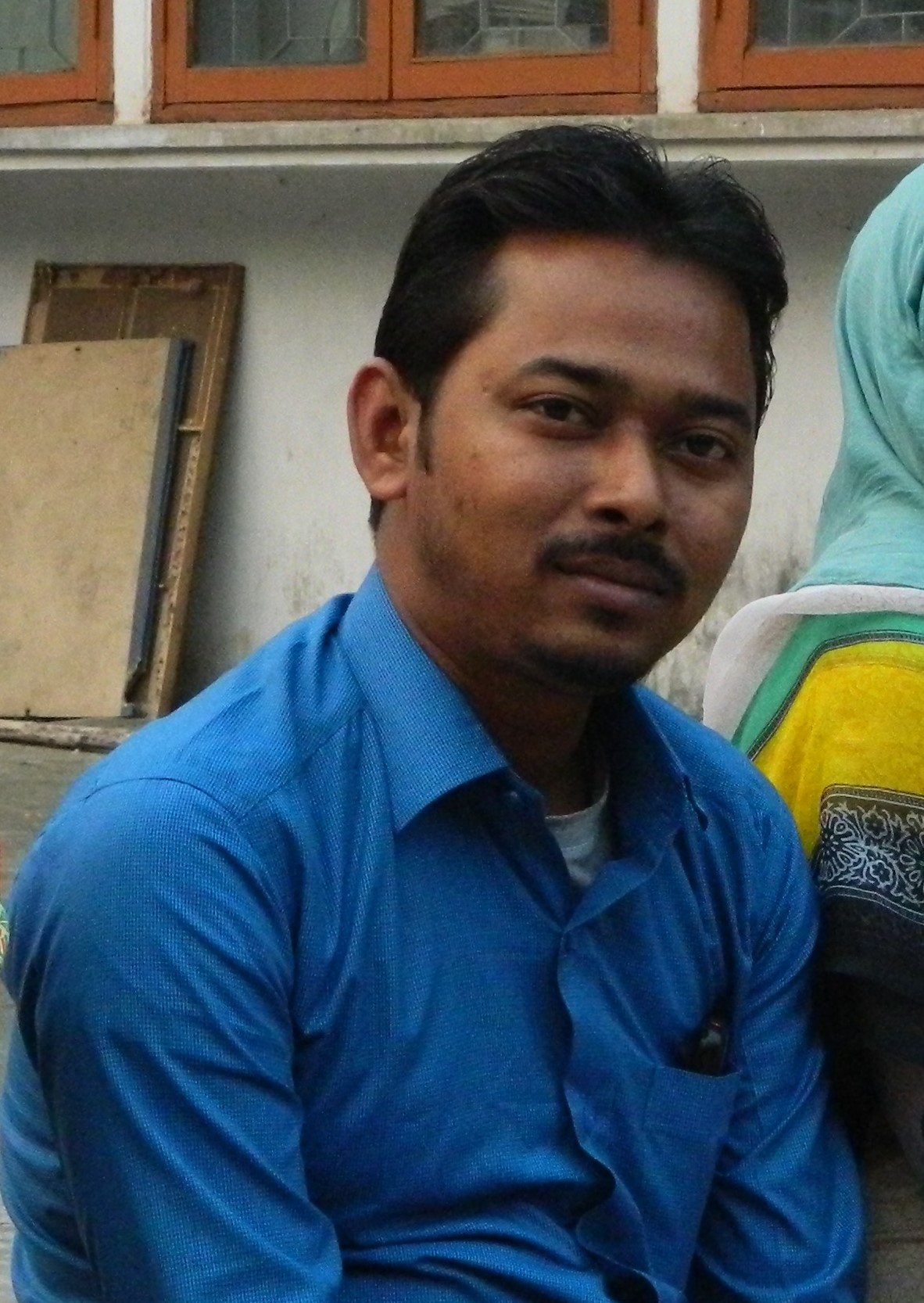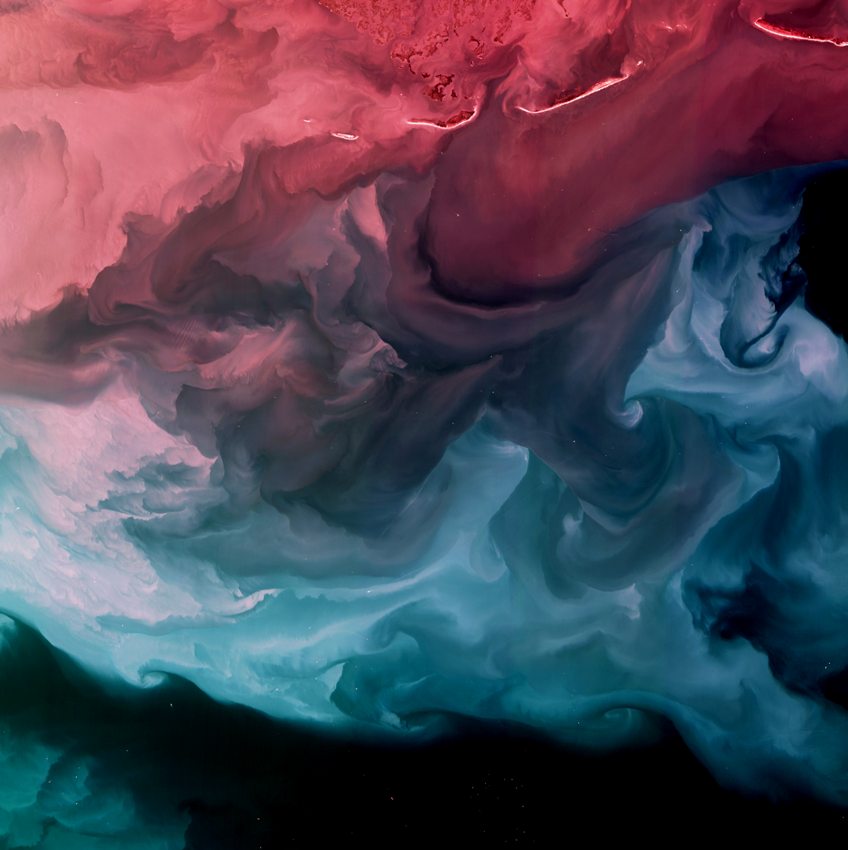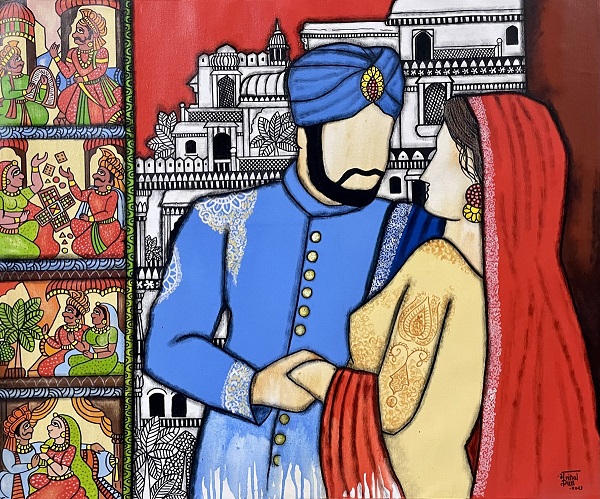
Indian figurative painting is a striking representation of the country's vibrant cultural legacy and impressive artistic techniques that have evolved. Within the vast domain of Indian painting, the genre of figurative painting holds a distinct significance as it beautifully encapsulates the very essence of life, heritage, and customs.
The goal of this blog is to delve into the enchanting realm of figurative Indian art and discover the intricacies that render it timeless and enigmatic.
The Rich Tradition of Indian Figurative Painting
Throughout centuries of history, India has been renowned for its rich heritage of figurative painting, with roots tracing back to ancient civilizations. From the detailed and mesmerizing cave paintings found in Ajanta and Ellora to the vibrant portrayals depicted in Mughal miniatures, Indian artists have consistently been captivated by the human figure as a prominent mode of communication. Notably, the incorporation of elements such as spirituality, mythology, and ordinary daily life in these creations only adds to their eternal allure.
The Cultural Tapestry Woven by Indian Figurative Paintings
Indian figurative painting is truly exceptional in its ability to create a tapestry of culture. Each brushstroke carries a narrative, whether it embellishes Hindu mythology, captures the vibrancy of festivals, or captures the nuances of daily life. Every masterfully crafted piece of figurative painting reflects the richness and complexity of Indian culture, making it a captivating and enduring source of historical and cultural tales.
The Expressive Techniques of Indian Figurative Painting
Indian artists use a diverse range of techniques to infuse vitality into their figurative paintings. With the utmost intricacy, they depict the smallest nuances of facial expressions and incorporate various fabrics and textures, elevating their works beyond mere visual depictions. The emotional depth and narrative conveyed in Indian paintings are unparalleled, standing the test of time and establishing it as a timeless medium for artistic expression.
The Aesthetic and Cultural Value of Indian Figurative Paintings
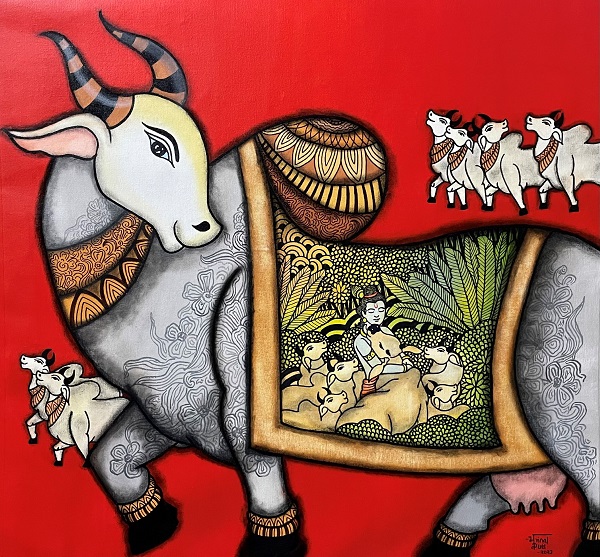
Indian figurative paintings not only captivate the eye but also hold great aesthetic and cultural importance. They act as portals to the past, providing insight into societal norms, fashion, and traditions. By blending traditional and modern elements, these masterpieces embody the ever-evolving nature of Indian culture and bridge the gap between the past and the present.
Exploring the Mystique: Why Indian Figurative Painting Endures
1. Cultural Continuity and Tradition:
Figurative Indian painting is steeped in cultural legacy and tradition, allowing artists to effortlessly draw from ancient tales and symbols, thus ensuring the timeless appeal of these paintings that transcend generations. Its enduring stories depicted in figurative painting evoke a strong sense of cultural connection among individuals, linking them to their ancestral heritage.
2. Spirituality and Symbolism:
Indian figurative paintings often incorporate spirituality and symbolism. From depictions of deities and mythical creatures to everyday scenes rich with symbolic significance, these artworks possess a visual language that surpasses mere words. The infusion of spiritual elements adds to the enigmatic allure of Indian figurative painting, evoking deep contemplation and profound meaning for those who view it.
3. Emotional Resonance:
The resounding emotion that permeates figurative Indian painting is a vital contributor to its lasting allure. These masterful artists adeptly portray the intricacies of human feelings - happiness, sadness, affection, and devotion - enabling audiences to form an intimate connection. The paintings' aptitude for evoking empathy and provoking emotions solidifies their enduring significance.
4. Diversity of Styles and Schools:
Figurative Indian painting cannot be limited to just one style or school. Its richness lies in the multitude of artistic techniques and inspirations, encompassing regional and historical nuances. From the intricate lifelike portrayal of Mughal miniatures to the lively hues of Rajasthani art, each unique style only adds to the captivating appeal of Indian paintings.
5. Adaptability to Modern Contexts:
Figurative Indian painting has a rich history, yet it manages to seamlessly integrate with modern culture. True to their roots, today's artists draw upon traditional motifs that are given a fresh twist with modern elements. This dynamic fusion allows Indian figurative painting to stay current and enthrall audiences in the contemporary art world.
6. Technological Advancements and Preservation:
The introduction of technology has been instrumental in safeguarding and displaying India's figurative paintings. By utilizing digital platforms, virtual museums, and online galleries, audiences from around the world can now gain entry to these timeless masterpieces. Incorporating technology not only helps preserve these works of art but also opens up innovative avenues for viewers to deeply connect with and admire the complexities of Indian figurative paintings.
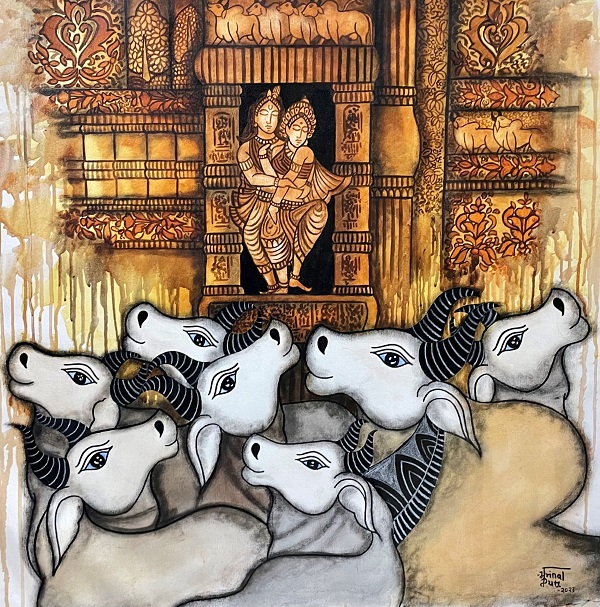
7. Influence of Global Art Movements:
The world of figurative Indian painting is far from being an isolated one. It is deeply intertwined with global art movements, constantly influencing and shaping its unique path. This dynamic exchange has resulted in a mesmerizing fusion of indigenous techniques and international influences, adding a captivating layer of complexity to Indian figurative paintings. As a result, these artworks hold an enigmatic allure, fueled by the cross-cultural magic they embody.
8. Role of Figurative Painting in Social Commentary:
India's figurative painting has a long history of serving as a platform for social critique. Through their canvases, artists boldly confront modern issues, societal conventions, and cultural evolution. This dynamic allows figurative paintings to effectively communicate impactful messages and maintains its ongoing significance in the dialogue surrounding India's socio-cultural landscape.
9. Continued Artistic Innovation:
The everlasting essence of figurative Indian painting is upheld by the passion for artistic creativity. Present-day artists persist in challenging boundaries, exploring novel mediums, techniques, and ideas. This constant drive for innovation keeps the genre alive, captivating audiences with innovative viewpoints while staying true to its traditional roots.
10. Collectors' Interest and Market Trends:
The enduring allure of Indian figurative paintings remains a constant source of fascination for art collectors. This is evident in the steady demand for such works in the market, demonstrating their enduring popularity. The investments made by collectors in these artworks only reaffirm their lasting value and contribute to a cycle that sustains the creation and admiration of these masterpieces.
11. Educational Initiatives and Cultural Awareness:
The preservation and promotion of Indian figurative art relies heavily on educational initiatives and cultural awareness programs. These efforts, both in India and around the world, play a crucial role in imparting knowledge about the rich history, techniques, and significance behind these paintings. As awareness and appreciation for the cultural context grows, so too does the likelihood that Indian figurative paintings will be cherished and valued for generations to come.
12. Community Engagement and Artistic Legacies:
By involving communities in the preservation and celebration of artistic legacies, we can ensure the enduring significance of Indian figurative painting. Through festivals, workshops, and community-driven initiatives, we create platforms for the transfer of artistic expertise and appreciation. This passing down of cultural traditions from one generation to the next instills a sense of pride and connectedness, reinforcing the timeless essence of figurative paintings.
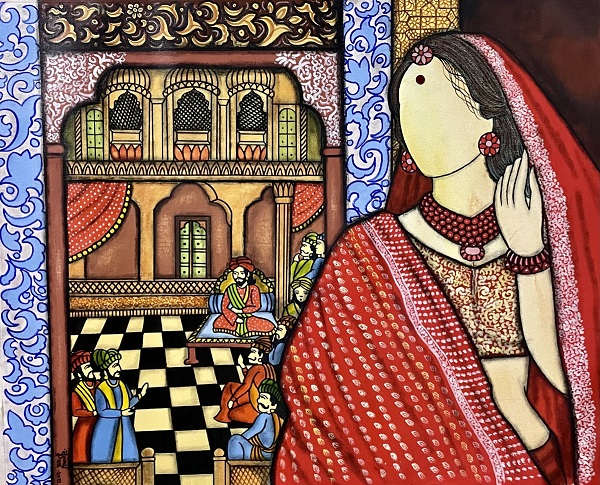
Conclusion:
As we delve into the enigmatic realm of figurative Indian painting, we encounter a powerful fusion of historical heritage, modern relevance, and worldwide impact. The dynamic interplay of technology, global influences, societal involvement, and artistic ingenuity all contribute to the enduring allure of these masterpieces. As we navigate the intricate strokes and symbolic tales depicted within Indian figurative paintings, we discover that their mesmerizing charm is not limited to their aesthetic beauty alone, but also encompasses multi-layered cultural, social, and artistic implications that continue to unfold. Truly, immersing oneself in the world of Indian figurative painting is a journey into the timeless and everlasting.
FAQs:
How Does Indian Figurative Painting Reflect Cultural Heritage?
Indian figurative art reflects the country's vibrant cultural legacy by capturing its customs, beliefs, and historical milestones. These masterpieces serve as powerful cultural reflections, capturing the essence and diversity of India's cultural tapestry with eloquence and precision.
What Emotional Resonance is Found in Indian Figurative Painting?
The emotional impact of figurative Indian painting is skillfully conveyed through the depiction of human emotions such as joy, sorrow, love, and devotion. This ability to evoke powerful emotional responses allows viewers to deeply connect with the depicted scenes, leaving a lasting impression and evoking empathy within them.
How Do Artists Blend Tradition with Innovation in Indian Figurative Painting?
Indian figurative artists skillfully combine traditional elements with modern techniques, materials, and concepts to create a perfect balance between tradition and innovation. Their works are a perfect fusion of classical themes and contemporary artistic expressions, providing a connection to the roots while embracing the present.
What Role Do Collectors Play in Sustaining the Appeal of Indian Figurative Painting?
Indian figurative art remains highly sought after and relevant thanks to the contributions of devoted art collectors. Through their investments and admiration, they both support and perpetuate the demand for these exquisite works. This further reinforces the lasting impact and worth of these magnificent paintings.











